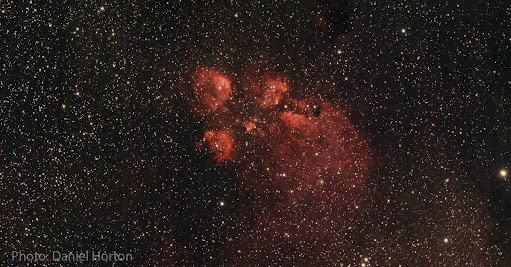Daniel Horton's Cat Paw
First light pictures are always exciting. They're proof of concept photos that give you an idea of what you're going to improve from.
Our mate Daniel's existing rig is a 115mm triplet refractor. With the flattener, its effective focal length is 644mm. All this is mounted on a Sky-Watcher AZEQ6-GT mount. Previously he was using a Canon DSLR attached to the scope's flattener.
Daniel decided to upgrade to an astronomical camera, and we sold him a ZWO ASI071MC. This is a cooled colour sensor that screws to the back of the flattener, and sends pictures to a laptop.
Somewhat ambitiously, he also decided to upgrade to autoguiding and use Sequence Generator Pro (SGP) as controlling software for the system. This is exactly what I did a while back and it nearly killed me. There are so many things to learn!
We worked through the setup, but there was one last problem. The laptop wasn't able to connect to the mount through the handbox, so autoguiding was out. The guide camera was able to tell the laptop how the mount was performing, but the laptop wasn't able to tell the mount how to compensate.
It can be fixed, but for the first night, Daniel decided to ditch the autoguiding, and compensate with shorter exposures and higher gain on the camera. Exactly what I would have done.
Outside, Daniel set up the rig and polar aligned with a Polemaster. He used the handbox to do a star alignment, and slew to the Cat's Paw nebula. Then he put the handbox down - possibly for the last ever time.
Firing up SGP, he framed the picture using a very high gain on the camera. Then SGP took over, cooling the camera and taking 100 30 second photos of the nebula. By the time this was done, the dew was getting heavy so that was it for the night.
Here is the photo. It's processed in Astro Pixel Processor, including dark, flat and bias calibration frames.
The next step is direct connection to the mount, which will enable autoguiding.
I'd be happy with that photo. Congratulations Daniel!

Comments
Post a Comment